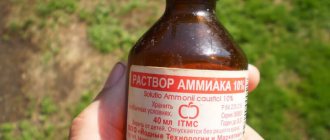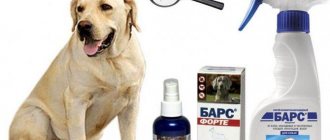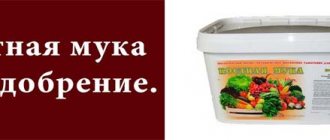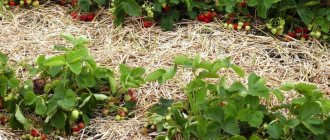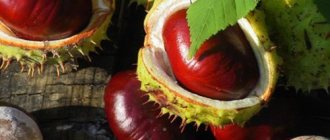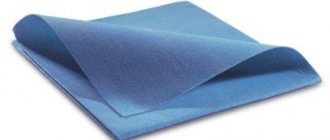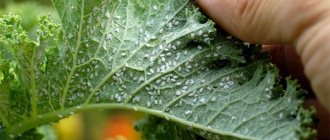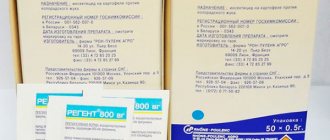Home / Preparations and fertilizers
Back
Published: 10/01/2021
1
5/5 — (1 vote)
Gardeners who prefer organics use bone meal as a phosphorus fertilizer in their dachas. The natural product is affordable, environmentally friendly, and at the same time enriches the soil with nutrients necessary for plants.
Bone meal, due to its characteristics, will not completely replace fast-acting mineral fertilizers, but it is quite suitable as an adjuvant. The main thing is to know the composition and characteristics of the substance, following the rules of use to obtain the maximum effect.
- 1 What is bone meal
- 2 Types
- 3 “Pros” and “cons” of fertilizer
- 4 Norms and methods of application by crop
- 5 Storage
- 6 Reviews
Characteristics of fishmeal
The primary purpose of fishmeal is as an additive to the feed of farm animals and birds. Nutritional value is based on the content of protein, essential amino acids, vitamins and mineral components. Due to the high content of phosphorus, nitrogen, calcium and microelements, the substance is also beneficial for plants.
The product is produced using special equipment from different types of fish, crustaceans and marine mammals. The raw materials are sequentially boiled, pressed, dried and ground to a powder state. The production of nutritional supplements is carried out by specialized enterprises and fishing ships. The quality of the product is controlled by GOST 2116–2000.
The specific amount of nutrients in the powder depends on the type of raw material.
The composition useful for garden crops looks like this:
- crude protein 50-75%;
- phosphorus 4-5.5%;
- nitrogen up to 5-10%;
- calcium 5-9%;
- iron, sulfur, selenium;
The price of fish powder depends on the type of raw material and protein content. The cost of fishmeal is from 45 rubles per kilogram.
To understand the cost-effectiveness of a product, you need to compare the content of mineral components in it with the indicators of other organic fertilizers that can be bought in the store.
In terms of the content of nitrogen, phosphorus and other elements, granulated chicken manure is closest to fishmeal. Its cost is from 75 rubles per kilogram. It turns out that using fishmeal in the garden is beneficial.
Press-drying method
In this case, the raw materials are fed through a conveyor into a special loading hopper, and then into the cooking container. After hot processing, it enters a screw press to remove moisture. The remaining mass after squeezing is dried and crushed.
One of the modifications of this method is centrifuge drying. In this case, after cooking, the fish does not go under a press, but into a special centrifuge.
The broth remaining after processing the raw materials using all these methods is used to prepare another very useful product - fish oil. It is also very often added to animal feed. It is extremely useful, for example, for ducklings and chickens. By receiving fish oil, young poultry get sick much less, and lunging is also reduced. This product, just like flour, is mixed into poultry feed. Experienced farmers recommend diluting it with water in a 1:2 ratio beforehand.
Advantages and disadvantages
Fishmeal has almost the same effect on plant development and productivity as complex mineral fertilizers. But due to the lower content of nutrients, it is less pronounced. Unlike synthetic fertilizers, it has a long aftereffect of up to 2-3 years after application.
What does the use of fertilizer provide:
- Increasing soil fertility . Once added to the soil, organic matter is processed by soil microorganisms, resulting in the formation of humus. Garden soil becomes loose, allows air to pass through well, and absorbs water and nutrients.
- Increased productivity . By feeding plants with phosphorus, nitrogen and other minerals, plant germination and development are accelerated, and fruits are actively produced in larger quantities. Vegetables, fruits and berries are rich in sugars and vitamins.
- Strengthening plant immunity . Garden crops are more resistant to various infections, drought, and cold weather.
- Safety . Mineralization of organic matter occurs gradually. There is no risk of transferring fertilizer and causing plant poisoning. Nitrates do not accumulate in fruits. The substance is harmless to humans and pets.
- Convenience and accessibility . The product is inexpensive, does not take up much storage space, and is easy to use.
Fertilizers also have disadvantages. Any organic matter cannot fully meet the needs of garden crops for essential nutrients. Modern plant varieties are highly productive and therefore require large amounts of quickly absorbed forms of nitrogen, phosphorus, and potassium during the growing season.
Using fishmeal, it is impossible to cure plants depleted due to lack of nutrition. Only chemical fertilizers with fast and strong action can cope with this task.
Using fishmeal in the garden
The organic additive takes time to decompose and mineralize. Therefore, it is mainly applied in the fall when digging the soil. But given the constant leaching of active substances from the soil, the gradual decomposition of the substance, it is better to use fertilizer during the growing season of plants. This ensures constant nutrition for garden crops.
The fertilizer rate depends on the type of soil. In light sandy, clayey, depleted soils, add 200 g of powder per 1 m2. In fertile chernozems and loams, 100 g per 1 m2 is enough.
The measured amount of powder is distributed on the surface of the site and embedded to a depth of 10-15 cm. Annual digging of the soil with the application of fertilizer helps maintain its fertility.
Do not work fishmeal into the soil too deeply. For the decomposition of any organic matter, air and heat are needed. Under the thickness of the soil, this process stops.
For indoor plants
The soil for most house flowers is a universal peat-based mixture. It is similar to a plant mixture for seedlings. Therefore, the rate of adding bone meal is the same. For every liter of nutrient soil you will need 1 tablespoon (without a slide) of fertilizer.
Important ! Bone meal should not be used when planting or caring for indoor azaleas. Fertilizing neutralizes the soil reaction, and representatives of the Heather family grow in an acidic environment. For the same reason, this fertilizer is not used when growing the following garden shrubs:
- rhododendrons,
- Erica,
- andromeda,
- blueberries
- heather
Feeding various crops
Fishmeal is suitable for all plants. Nightshade crops are especially responsive to it.
Potato
The nutritional composition is applied a week before planting potatoes. The powder is scattered on the surface of the site at the rate of 100 g per 1 m2 and the soil is dug up. The composition can also be added to each hole, but this will take more time.
Tomatoes, eggplants, peppers
Fish powder is added during planting of seedlings. 20-40 g of the substance is added to each planting hole and mixed with soil. Half the dose of fertilizer can be mixed with granulated chicken manure 1:1.
Fruit and berry crops
At the periphery of the crowns of mature trees, a trench is dug in a circle. Powder is distributed in it at the rate of 200 g per 1 m2, covered with soil and watered abundantly. Berry bushes are fed in the same way, only less fertilizer is applied - 100 g per 1 m2. Feeding is carried out 3 times a season.
Any fertilizers negatively affect the survival rate of seedlings. Young trees begin to be fed in the second year after planting.
Seedlings and indoor flowers
Nutrient flour is used to enrich homemade soil mixture for seedlings, which is prepared in the fall. The disinfected soil is mixed with the composition at the rate of 1 kg/1 tbsp. l.
In the same way, you can enrich the soil mixture when replanting indoor flowers. Subsequently, 10 g of nutrient powder is added under the flowers twice a year, combined with watering.
There is no need to add fertilizer to purchased soils. They contain enough of all nutrients; an excess of them will harm the seedlings.
Ornamental plants
In addition to autumn fertilizer, powder is applied to the beds under garden flowers in the spring 2-3 weeks before planting. To do this, apply 50 g of the substance per 1 m2 of soil and water it with water.
Beets, carrots and other root vegetables
The nutritional supplement is applied during the first thinning of seedlings. The powder is distributed in rows at the rate of 50 g per 1 m2, the soil is loosened and watered.
For rooting seedlings
When planting tomatoes, fertilizer is applied to each hole.
In order for the seeds to germinate and take root, a light peat-sand substrate is needed (find out → how to use peat as a top dressing + reviews). For seedlings, it is important that the soil contains enough phosphorus. It is he who is responsible for the appearance and growth of young roots. When preparing the mixture, high-moor peat is used, its acid-base balance is pH – 3, that is, a strongly acidic reaction. In combination with bone meal, an effective result is achieved, provided the dosage is 1:100. In other words, for 100 parts of substrate, 1 part of flour is needed.
Compost enrichment
Most compost consists of plant debris that is placed in a bin, hole, or just a pile. Any organic substances are added to them: manure, garden soil, kitchen waste, sawdust, straw shavings, etc.
Finished compost often lacks phosphorus. To make it a universal fertilizer, fishmeal is added to it. The powder increases the content of macro- and microelements in it, accelerates the decomposition of plant residues.
To distribute the composition evenly, the compost is laid in layers 20-25 cm thick. Each layer is sprinkled with powder. Then they spill it with water.
Selection rules
Very often, products based on it are sold under the guise and price of 100% fishmeal. These are various mixtures of fishmeal with plant and animal components, inorganic nitrogen (urea, ammonium nitrate, etc.). Chemical nitrogen artificially increases protein levels, and unscrupulous sellers take advantage of this property. By law, such products must cost less than natural meal and be called a “fishmeal product.”
Such a powder will not cause harm, but there will be significantly less benefit. Supporters of organic farming will not like the chemical content in the fertilizer.
To avoid buying counterfeit products and overpaying, choose a reliable manufacturer with product quality certificates. As a rule, photographs of documents are posted on the company’s website. Flour should not have any foreign odors: mold, mustiness.
Fish powder is a tricky product. If stored incorrectly, mold and ammonia will form in it. A damaged product must not be used.
Storage rules:
- protection from moisture and rodents;
- optimal air humidity up to 75%;
- air temperature no more than 30 °C;
- shelf life 12 months.
You can buy fishmeal in manufacturers’ online stores. The nutritional composition is also sold in garden stores. There is not only 100% powder, but also fertilizers based on it. Some of them are developed for specific crops and are enhanced with additional nutritional components.
Chemical composition of fertilizer. The role of nutrients in plant development
Bone meal contains many useful substances, which, in turn, include most of D.I. Mendeleev’s table.
Among them it is important to highlight:
| Macronutrients | Microelements |
| Phosphorus | Iron |
| Calcium | Sodium |
| Potassium | Magnesium |
| Nitrogen | Zinc |
| Copper | |
| Manganese | |
| Cobalt | |
| Iodine (see → how to apply fertilizer) |
The percentage of phosphorus in bone meal is the highest, therefore the product is classified as a phosphate fertilizer (find out → types of phosphate fertilizers).
Phosphorus is the main part of DNA, the genetic memory of plants.
The contribution of the element to plant life is invaluable; phosphorus is
- The basis of DNA (Deoxyribonucleic acid), with the help of which accumulation and transmission occurs in the nuclei of cells. This guarantees the preservation of morphological and biological characteristics from generation to generation.
- Only in its presence does photosynthesis occur - the formation of chlorophyll, a specific green pigment . Under the influence of sunlight, complex organic compounds ATP (adenosine triphosphoric acid) are formed. It, in turn, controls respiratory and metabolic processes in plant tissues.
What else does phosphorus affect in bone meal (click to expand)
- Takes an important part in the growth of young roots and strengthening of the adult root system in perennial crops.
- Regulates the process of laying flower buds.
- Affects the brightness of the color of decorative flowers.
- In its presence, glucose, sucrose, starch are formed, that is, those substances that are responsible for the size and taste of the fruit.
- It is part of phytin, the largest amount of which is found in seeds and affects their germination.
In other words, without phosphorus most vital processes are impossible. That is why, the lack of an element negatively affects all, without exception, plant organs, both above-ground and underground. The deficiency can be easily replenished with the help of bone meal, which is rich not only in phosphorus, but also in other useful compounds.
DIY fishmeal
To obtain 1 kg of fertilizer, you need to process 4-6 kg of raw materials. Even when buying the cheapest fish, the cost of homemade flour will be significantly higher than the finished product. Making your own powder is beneficial for gardeners who are keen on fishing.
To do this, the fish is cut into small pieces and dried in the oven until it turns brown. After cooling, the raw material is crushed using a crusher to a powder state.
Gardeners who adhere to organic farming have difficulty providing adequate nutrition to their plants. It is especially difficult to provide plantings with nitrogen and phosphorus, the lack of which becomes the main reason for low yields. In addition, not all gardeners have the opportunity to bring tons of manure to the site. Fishmeal helps solve these problems and will also be useful when used in combination with agrochemicals. After all, synthetic fertilizers do not increase soil fertility.
How to make this product at home?
Sometimes people have excess fish and waste from it. Naturally, they wonder about the possibility of processing fish into flour without the use of special equipment.
Without discussing the feasibility and profitability of home processing, we can say with confidence that home production is quite possible.
Sample home cooking process:
- Waste or trash fish, including skin, scales, fins, heads, bones, and intestines, are poured into a thick-walled pressure cooker-type pan with a heavy, tight-fitting lid.
- The contents of the pan are filled with water so as to cover the contents.
- Place the container on the fire and bring to a boil.
- There is no need to let the mixture boil; it is enough to maintain the temperature at about 100 degrees over low heat under a tightly closed lid.
- The heat treatment period is about 5 hours.
- Next, the contents are placed in a colander, then the mass is cooled.
- The sufficiently cooled mass is passed through a meat grinder.
- The last stage is drying the minced meat in the oven or microwave.
Fishmeal is ready and can be stored for a long time if it feels like regular flour.
It is useful on the farm for feeding chickens and piglets; it can and should be added to feed for poultry and pigs.
Such supplements promote the growth and health of pets. Even cats and dogs will not refuse such a treat.
The broth left over from preparing the flour can essentially be called fish oil. The broth will also be eaten with pleasure by pigs and dogs, but it can be added little by little to dry food or cereal.
You should not give fishmeal to cows and sheep, because these are herbivores.
